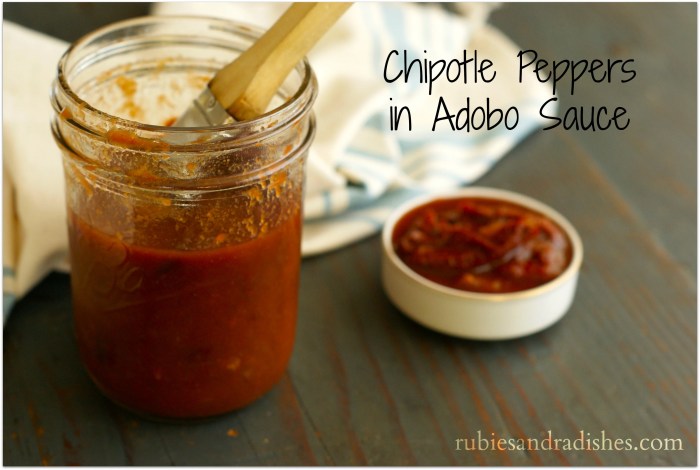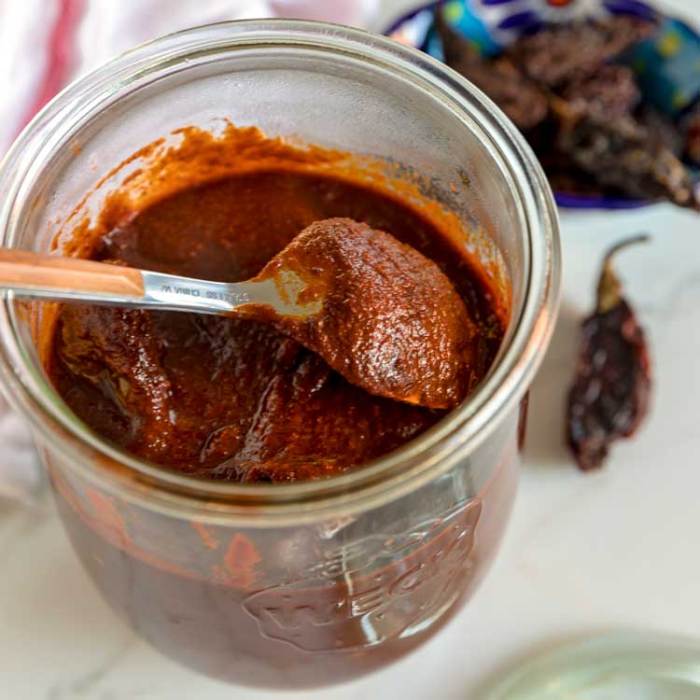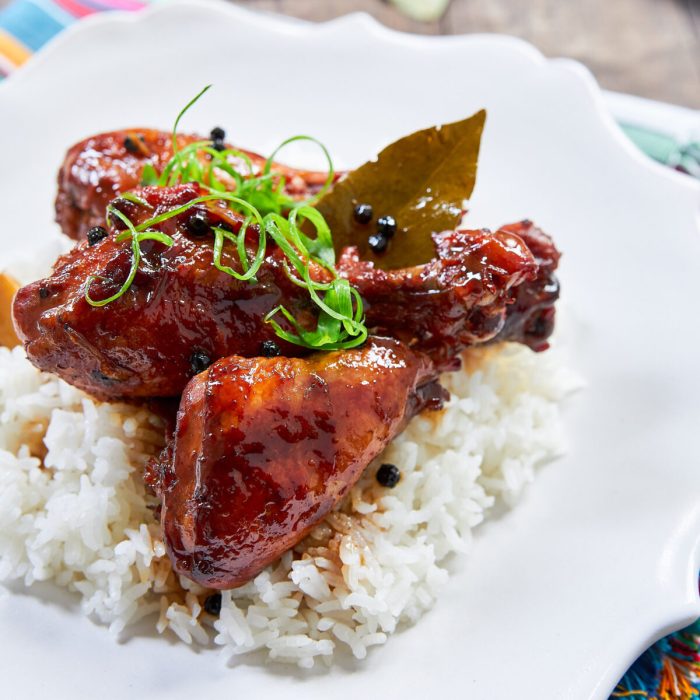Adobo sauce recipe, a culinary treasure from the Philippines, is more than just a sauce; it’s a story of flavors, traditions, and cultural heritage. This rich and savory sauce, often described as the national dish of the Philippines, has a history that dates back centuries.
The word “adobo” itself is derived from the Spanish word “adobar,” meaning “to marinade,” which reflects the sauce’s ability to preserve meat and vegetables for extended periods. The versatility of adobo sauce is truly remarkable, with variations across regions, each showcasing a unique blend of ingredients and cooking techniques.
From the classic Filipino adobo, a symphony of soy sauce, vinegar, garlic, and black peppercorns, to variations like adobo sa gata (coconut milk), adobo sa puti (white adobo), and adobo sa tuyo (dried fish), the possibilities are endless. Whether you’re a seasoned cook or a culinary novice, the beauty of adobo sauce lies in its simplicity and adaptability.
With just a few key ingredients and a touch of creativity, you can recreate this beloved dish in your own kitchen.
Introduction to Adobo Sauce

Adobo sauce, a staple in Filipino cuisine, is a flavorful and versatile condiment with a rich history and cultural significance. It is a testament to the ingenuity of Filipino cooks, who have adapted ingredients and techniques over centuries to create a dish that is both delicious and deeply rooted in tradition.
Origins and History
The origins of adobo can be traced back to the pre-colonial era in the Philippines. It is believed that the early Filipinos, who were skilled hunters and fishermen, developed methods for preserving meat and seafood using vinegar, salt, and other natural ingredients.
This practice, known as “adobo,” was crucial for ensuring food security in a tropical climate.
Cultural Significance
Adobo sauce holds a special place in Filipino culture. It is considered a national dish and is served at countless celebrations, family gatherings, and everyday meals. The versatility of adobo allows it to be prepared with various ingredients, such as chicken, pork, seafood, vegetables, and even eggs.
Each region in the Philippines has its own unique variations of adobo, reflecting the diverse culinary traditions of the archipelago.
Key Ingredients and Variations
The basic ingredients of adobo sauce include vinegar, soy sauce, garlic, black peppercorns, and bay leaves. However, variations abound, with different regions and families adding their own unique touches. Some common variations include:
- Adobo sa Puti: A lighter version of adobo using white vinegar and often incorporating chicken or pork.
- Adobo sa Pula: A richer version of adobo using red vinegar, typically with pork or seafood.
- Adobo sa Gata: A creamy version of adobo using coconut milk, often with chicken or seafood.
- Adobo sa Patis: A variation using fish sauce, resulting in a more savory and umami-rich flavor.
Classic Adobo Sauce Recipe

This recipe provides a step-by-step guide to creating a classic Filipino adobo sauce, a staple in Filipino cuisine. Adobo sauce is a savory, tangy, and flavorful sauce that is used to marinate and cook various meats, particularly chicken and pork.
Ingredients
The ingredients for classic adobo sauce are simple and readily available.
- Soy sauce: Provides a salty and umami base for the sauce.
- Vinegar: Adds tanginess and helps tenderize the meat.
- Garlic: Contributes a pungent and savory aroma.
- Black peppercorns: Adds a spicy kick and complexity to the flavor.
- Bay leaves: Adds a subtle, earthy aroma and flavor.
- Water: Helps to dilute the sauce and create a more balanced flavor.
Instructions
The preparation of adobo sauce is straightforward and can be done in a few simple steps.
- In a large pot or skillet, combine the soy sauce, vinegar, garlic, black peppercorns, and bay leaves.
- Bring the mixture to a boil over medium heat, then reduce the heat to low and simmer for 15 minutes, or until the sauce has thickened slightly.
- Add the meat of your choice to the sauce and cook until tender, about 30 minutes for chicken and 45 minutes for pork.
- Serve hot over rice or with other Filipino dishes.
Tips and Tricks
Here are some tips and tricks for achieving the best flavor and texture for your adobo sauce:
- Use high-quality soy sauce for a richer flavor.
- For a milder flavor, use white vinegar instead of apple cider vinegar.
- Add a few slices of ginger to the sauce for an extra layer of flavor.
- To prevent the meat from becoming too dry, add a small amount of water to the sauce during cooking.
- For a more intense flavor, simmer the sauce for longer.
Variations of Adobo Sauce

Adobo sauce is a versatile dish that can be adapted to different regional tastes and preferences. Across the Philippines, you’ll find countless variations of adobo, each with its unique flavor profile and ingredients. Here are some popular variations of adobo sauce:
Adobo sa Gata (Coconut Milk Adobo), Adobo sauce recipe
Adobo sa gata, or adobo with coconut milk, is a popular variation from the Visayas region of the Philippines. Coconut milk adds a rich, creamy texture and a slightly sweet flavor to the adobo. The coconut milk also helps to tenderize the meat, resulting in a more flavorful and succulent dish.
Enhance your insight with the methods and methods of keto shrimp recipes.
Adobo sa gata is a unique and delicious variation of adobo that showcases the versatility of Filipino cuisine.
Here’s a basic recipe for adobo sa gata: Ingredients:* 1 kg pork belly, cut into cubes
- 1 cup coconut milk
- 1/2 cup soy sauce
- 1/4 cup vinegar
- 1 tablespoon garlic, minced
- 1 tablespoon black peppercorns
- 1 bay leaf
- Salt to taste
Instructions:
- In a large pot, combine the pork belly, coconut milk, soy sauce, vinegar, garlic, peppercorns, and bay leaf.
- Bring to a boil, then reduce heat and simmer for 1-2 hours, or until the pork is tender.
- Season with salt to taste.
- Serve hot with rice.
Adobo sa Puti (White Adobo)
Adobo sa puti, or white adobo, is a variation that uses white wine vinegar instead of the traditional cane vinegar. This results in a lighter, more delicate flavor profile. White adobo is often served with potatoes and is a popular dish in the Bicol region of the Philippines.
Adobo sa puti is a lighter and more delicate variation of adobo that is perfect for those who prefer a less intense flavor.
Here’s a basic recipe for adobo sa puti: Ingredients:* 1 kg chicken, cut into pieces
- 1 cup white wine vinegar
- 1/2 cup soy sauce
- 1 tablespoon garlic, minced
- 1 tablespoon black peppercorns
- 1 bay leaf
- Salt to taste
Instructions:
- In a large pot, combine the chicken, white wine vinegar, soy sauce, garlic, peppercorns, and bay leaf.
- Bring to a boil, then reduce heat and simmer for 30-45 minutes, or until the chicken is cooked through.
- Season with salt to taste.
- Serve hot with rice.
Adobo sa Tuyo (Dried Fish Adobo)
Adobo sa tuyo, or adobo with dried fish, is a popular variation from the Visayas region of the Philippines. Dried fish adds a salty, umami flavor to the adobo. The dried fish is typically soaked in water before being added to the adobo sauce, which helps to rehydrate it and prevent it from becoming too dry.
Adobo sa tuyo is a unique and flavorful variation of adobo that showcases the versatility of Filipino cuisine.
Here’s a basic recipe for adobo sa tuyo: Ingredients:* 1 kg pork belly, cut into cubes
- 1 cup soy sauce
- 1/4 cup vinegar
- 1 tablespoon garlic, minced
- 1 tablespoon black peppercorns
- 1 bay leaf
- 1/2 cup dried fish, soaked in water for 30 minutes
- Salt to taste
Instructions:
- In a large pot, combine the pork belly, soy sauce, vinegar, garlic, peppercorns, and bay leaf.
- Bring to a boil, then reduce heat and simmer for 1-2 hours, or until the pork is tender.
- Add the dried fish and continue to simmer for 15 minutes, or until the fish is cooked through.
- Season with salt to taste.
- Serve hot with rice.
Table Comparing Key Differences in Adobo Sauce Variations
| Variation | Key Ingredients | Flavor Profile |
|---|---|---|
| Adobo sa Gata | Coconut milk, soy sauce, vinegar, garlic, black peppercorns, bay leaf | Rich, creamy, slightly sweet |
| Adobo sa Puti | White wine vinegar, soy sauce, garlic, black peppercorns, bay leaf | Lighter, more delicate |
| Adobo sa Tuyo | Soy sauce, vinegar, garlic, black peppercorns, bay leaf, dried fish | Salty, umami |
Cooking Techniques for Adobo Sauce
Adobo sauce can be cooked using a variety of methods, each with its own advantages and disadvantages. The most common methods are simmering, braising, and pressure cooking.
Simmering
Simmering is a gentle cooking method that involves cooking food in liquid just below the boiling point. This method is ideal for adobo sauce because it allows the flavors to develop slowly and evenly. Simmering adobo sauce typically takes 30-45 minutes, but the cooking time may vary depending on the ingredients and the desired consistency.
Advantages of Simmering
- Simmering is a gentle cooking method that helps to preserve the nutrients and flavors of the ingredients.
- It is a relatively simple and hands-off cooking method.
- Simmering allows the flavors to develop slowly and evenly.
Disadvantages of Simmering
- Simmering can take a longer time than other cooking methods.
- It is important to monitor the sauce regularly to prevent it from burning.
Braising
Braising is a cooking method that involves searing the ingredients in a hot pan and then simmering them in liquid over low heat. This method is ideal for adobo sauce because it creates a rich and flavorful sauce.Braising adobo sauce typically takes 1-2 hours, but the cooking time may vary depending on the ingredients and the desired consistency.
Advantages of Braising
- Braising creates a rich and flavorful sauce.
- It is a relatively simple and hands-off cooking method.
- Braising tenderizes tough cuts of meat.
Disadvantages of Braising
- Braising can take a longer time than other cooking methods.
- It is important to monitor the sauce regularly to prevent it from burning.
Pressure Cooking
Pressure cooking is a fast and efficient cooking method that involves cooking food in a sealed pot under high pressure. This method is ideal for adobo sauce because it reduces the cooking time significantly.Pressure cooking adobo sauce typically takes 15-20 minutes, but the cooking time may vary depending on the ingredients and the desired consistency.
Advantages of Pressure Cooking
- Pressure cooking is a fast and efficient cooking method.
- It helps to tenderize tough cuts of meat.
- Pressure cooking can help to preserve the nutrients of the ingredients.
Disadvantages of Pressure Cooking
- Pressure cooking can be a more expensive method than other cooking methods.
- It is important to follow the manufacturer’s instructions carefully to avoid accidents.
Serving and Pairing Adobo Sauce

Adobo sauce, with its rich and complex flavors, is a versatile condiment that can be enjoyed in various ways. It can be used as a marinade, a sauce for dipping, or even as an ingredient in other dishes.Adobo sauce is a culinary chameleon, complementing a wide range of dishes.
It pairs beautifully with meats, seafood, and vegetables, offering a depth of flavor that enhances the overall dining experience.
Traditional Serving Methods
Traditionally, adobo sauce is served with rice. The combination of the savory sauce and fluffy rice creates a satisfying and comforting meal. Adobo sauce is also commonly enjoyed with noodles, providing a delightful contrast of textures and flavors. For a lighter option, adobo sauce can be served with steamed vegetables, allowing the sauce to enhance the natural flavors of the vegetables.
Popular Pairings
Adobo sauce’s versatility extends to its pairings. It works exceptionally well with various meats, including chicken, pork, and beef. The sauce’s acidity helps tenderize the meat, while its savory notes add depth to the flavor profile. Adobo sauce also complements seafood dishes, such as fish and shrimp.
The sauce’s richness and spice enhance the delicate flavors of seafood.
Pairing Suggestions
Adobo sauce’s ability to complement diverse dishes makes it a popular choice for various culinary creations. Here is a table showcasing suggested pairings, highlighting the complementary flavors and textures:| Dish | Adobo Sauce Pairing | Flavor and Texture Complementarity ||—|—|—|| Chicken Adobo| White rice, steamed vegetables | The savory sauce pairs perfectly with the fluffy rice, while the vegetables add a refreshing contrast.
|| Pork Adobo| Pancit (Filipino noodles), garlic fried rice | The sauce’s richness and spice complement the noodles, while the garlic fried rice provides a savory base. || Seafood Adobo| Steamed rice, sauteed vegetables | The sauce’s savory notes enhance the delicate flavors of seafood, while the rice and vegetables provide a balanced accompaniment.
|| Grilled Vegetables| Adobo sauce as a dipping sauce | The sauce’s acidity and savory notes add a delicious dimension to grilled vegetables. || Tacos| Adobo sauce as a topping | The sauce’s savory and spicy notes complement the traditional taco flavors.
|
Adobo Sauce in Modern Cuisine

Adobo sauce, a cornerstone of Filipino cuisine, has transcended its traditional boundaries and found its way into the contemporary culinary landscape. Chefs around the world are embracing the rich flavors and versatility of adobo sauce, incorporating it into innovative dishes that showcase its unique character.
Innovative Dishes Featuring Adobo Sauce
The use of adobo sauce in modern cuisine is not limited to traditional Filipino dishes. Chefs have explored its potential in a wide range of culinary creations, pushing the boundaries of flavor and presentation. Here are some examples:
- Adobo-Glazed Short Ribs:This dish combines the savory depth of adobo sauce with the tenderness of slow-cooked short ribs, creating a symphony of flavors. The glaze adds a layer of richness and complexity, elevating the dish to new heights.
- Adobo-Marinated Grilled Chicken:The marinade infuses the chicken with the signature adobo flavors, resulting in a succulent and aromatic dish. The grilling process adds a smoky dimension, further enhancing the taste profile.
- Adobo-Spiced Pasta:This dish features adobo sauce as a flavorful base for pasta, creating a unique and exciting culinary experience. The spicy notes of the adobo sauce complement the pasta perfectly, offering a satisfying and memorable meal.
Modernizing the Traditional Adobo Sauce Recipe
Modern chefs have taken the traditional adobo sauce recipe and infused it with their own creative interpretations. They have experimented with different ingredients, cooking techniques, and flavor profiles to create innovative variations of this classic sauce.
- Using Alternative Vinegars:Instead of the traditional vinegar, chefs have explored using apple cider vinegar, balsamic vinegar, or even rice vinegar to create different flavor profiles. These alternatives add unique notes of sweetness, tartness, or umami to the sauce.
- Adding Unique Spices:Chefs have incorporated spices like star anise, cinnamon, or bay leaves to enhance the complexity of the adobo sauce. These additions create a more nuanced and aromatic flavor profile.
- Infusing with Flavors:Some chefs have experimented with infusing the adobo sauce with different ingredients, such as garlic, ginger, or chilies, to create unique and flavorful variations. These infusions add depth and complexity to the sauce, elevating its taste to new levels.
Last Recap
Adobo sauce, a testament to the culinary ingenuity of the Filipino people, continues to captivate taste buds worldwide. From its humble beginnings as a preservation method to its evolution as a celebrated dish, adobo sauce has left an indelible mark on the culinary landscape.
Whether you’re savoring the classic version with its rich and savory flavors or exploring the diverse regional variations, adobo sauce offers a unique and satisfying culinary experience. So, embark on your own adobo journey, experiment with different ingredients and techniques, and discover the magic of this beloved sauce.
